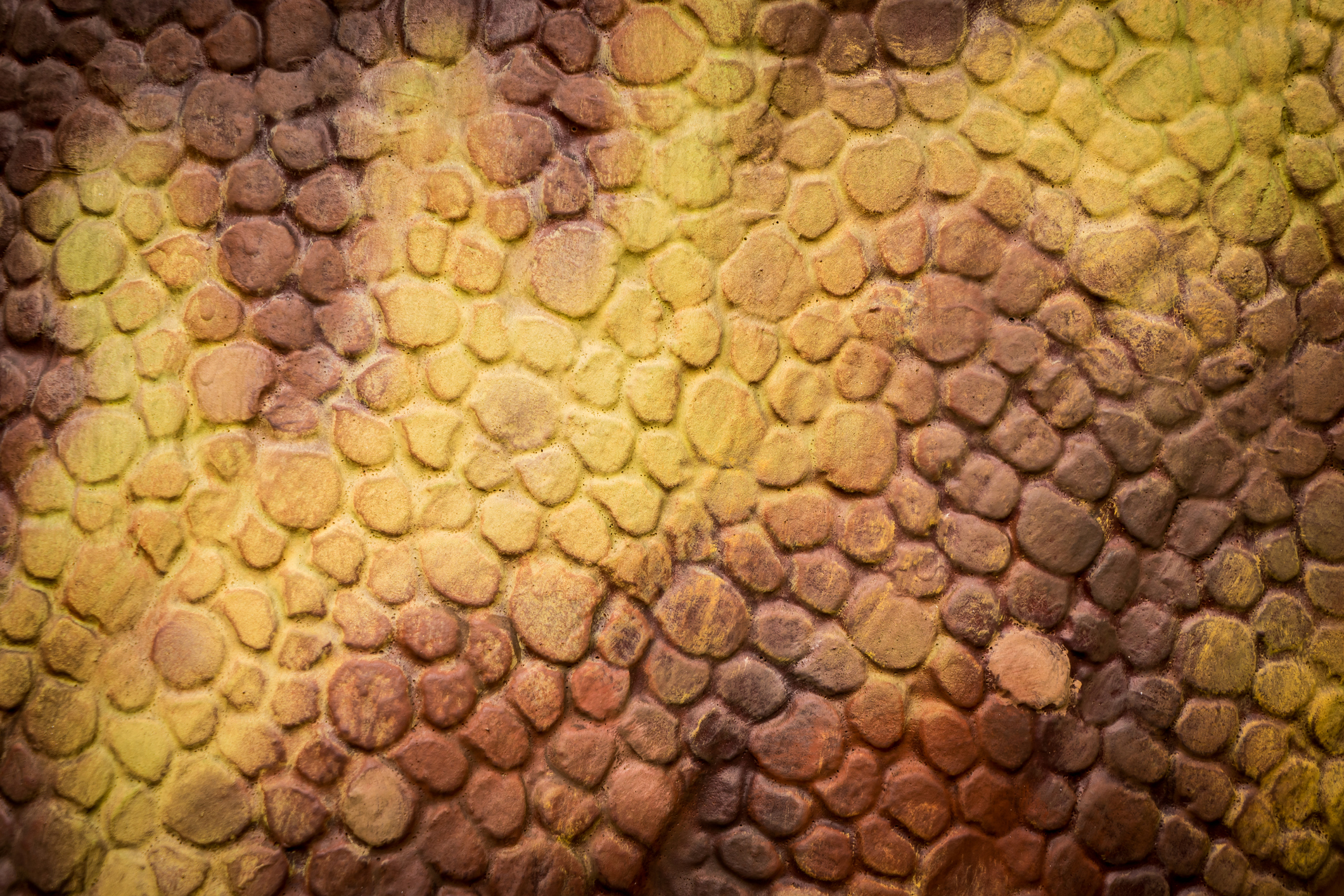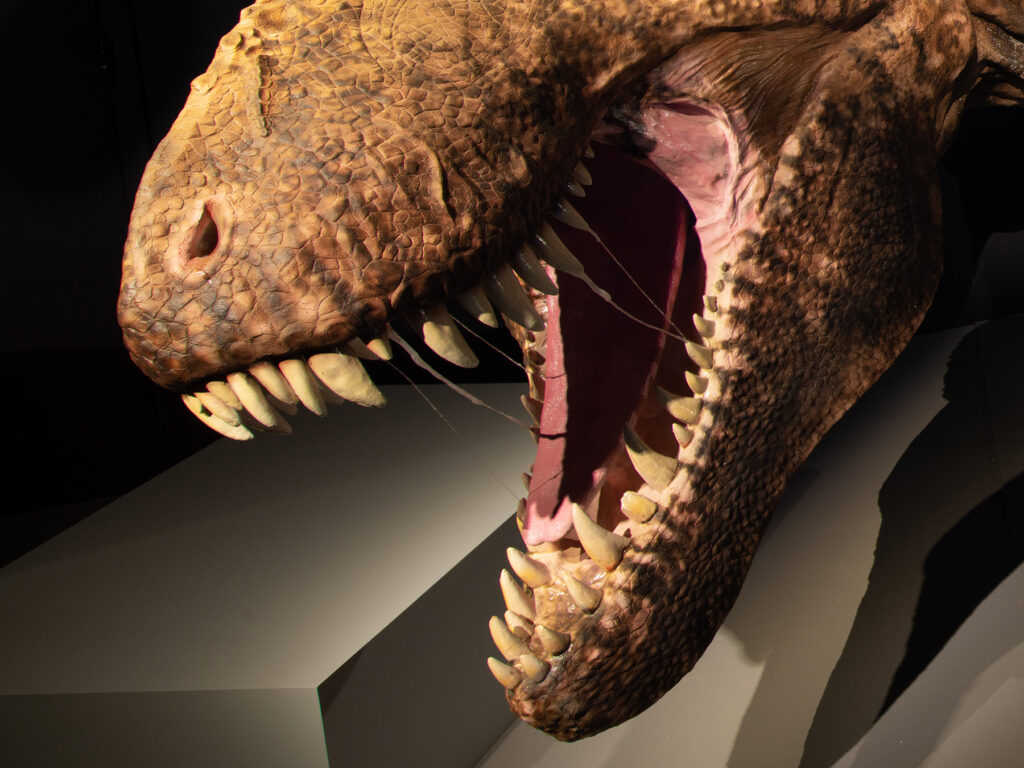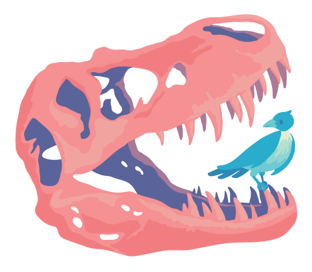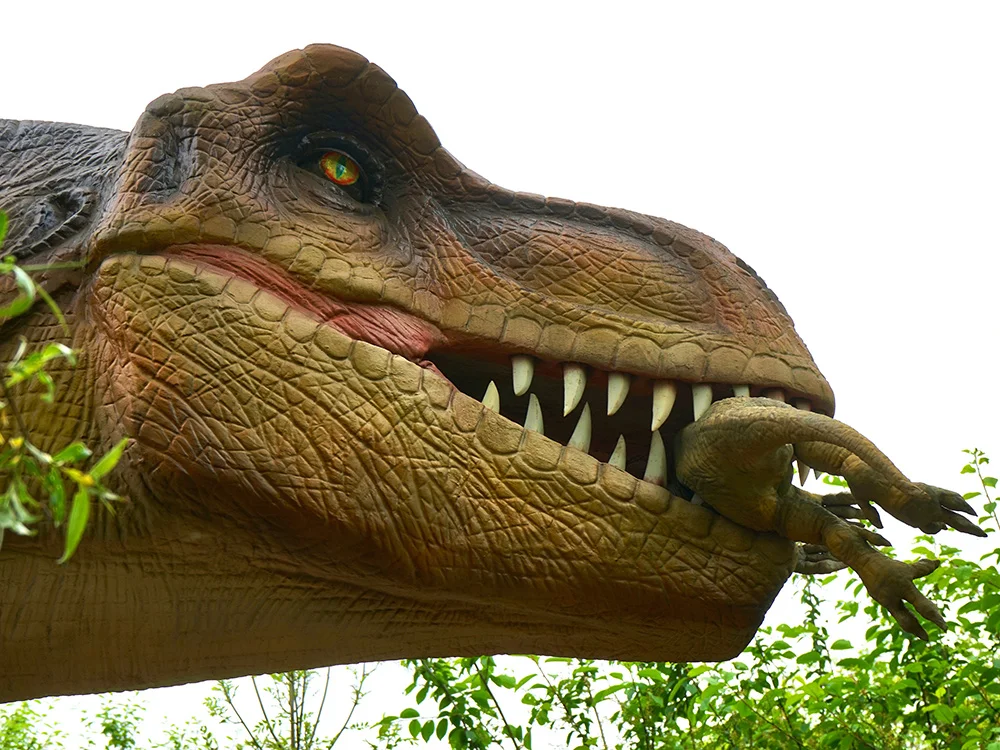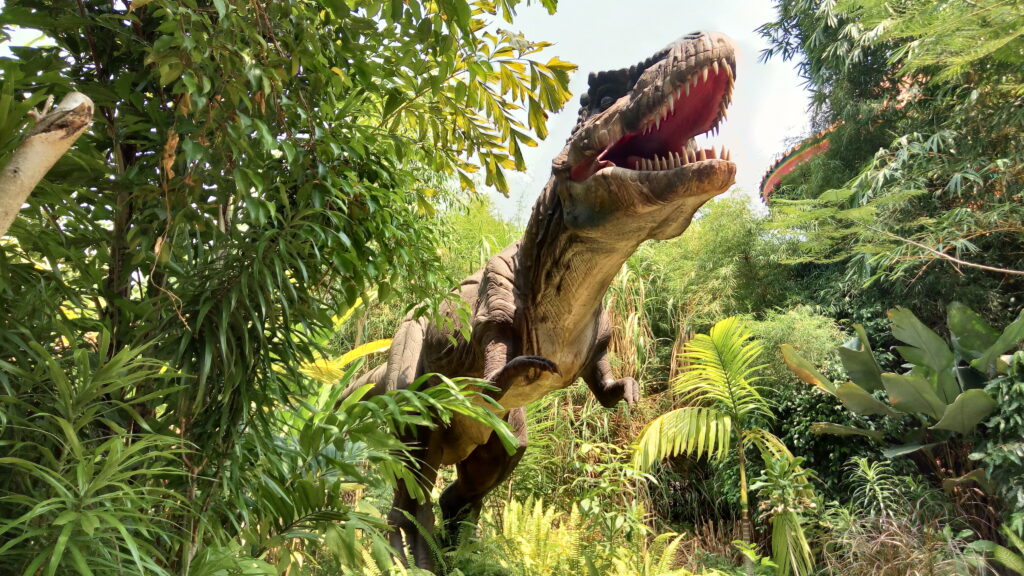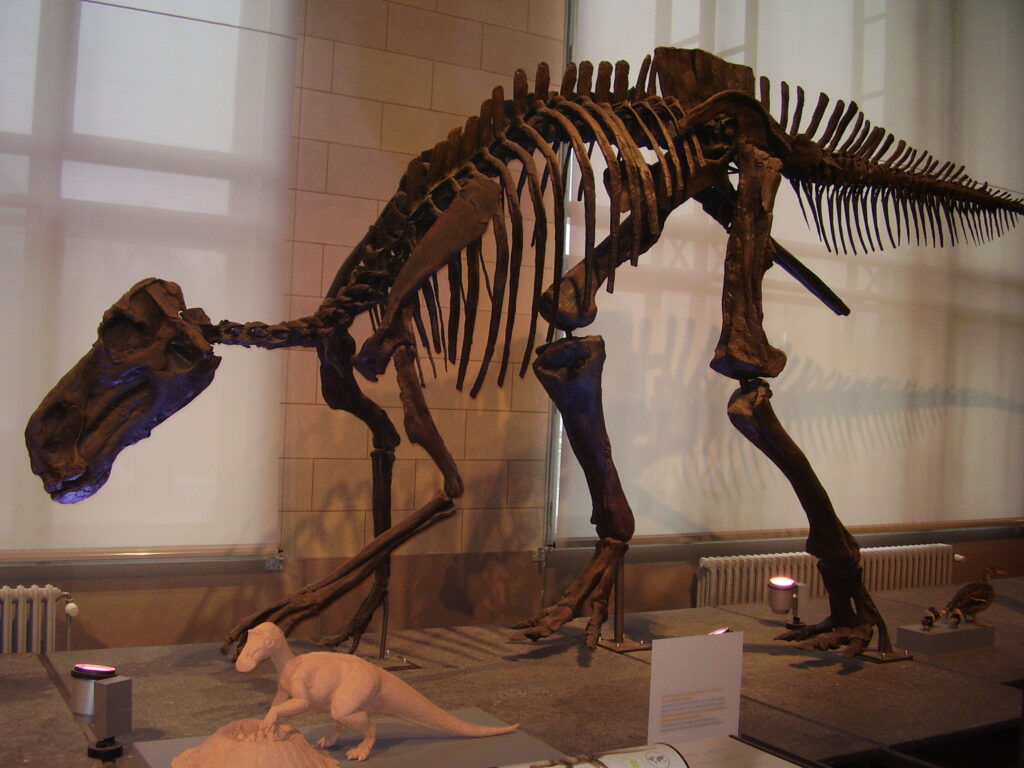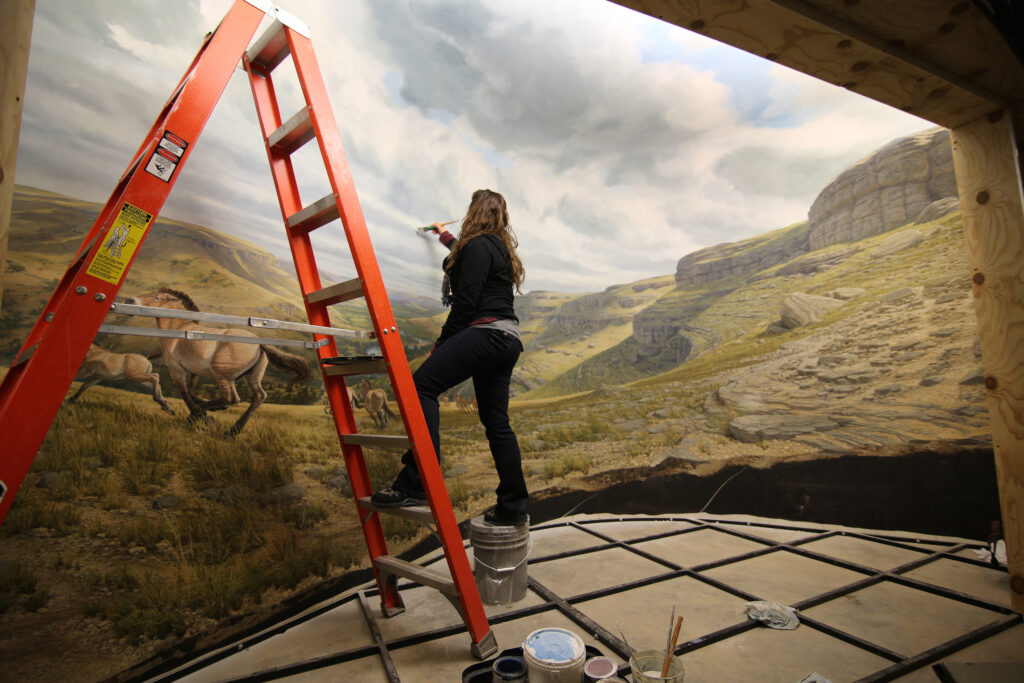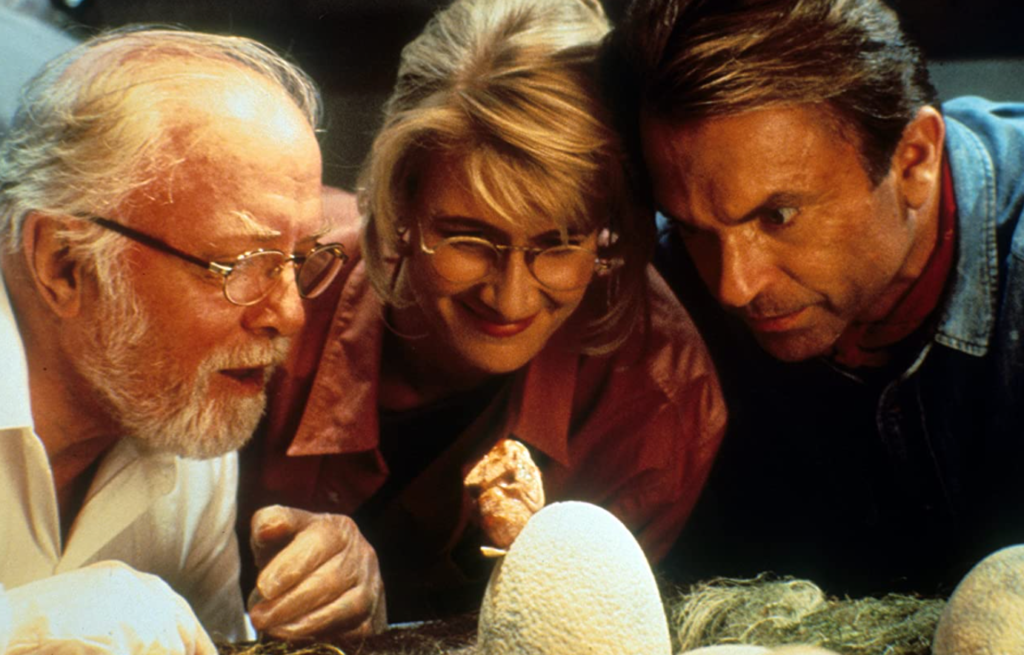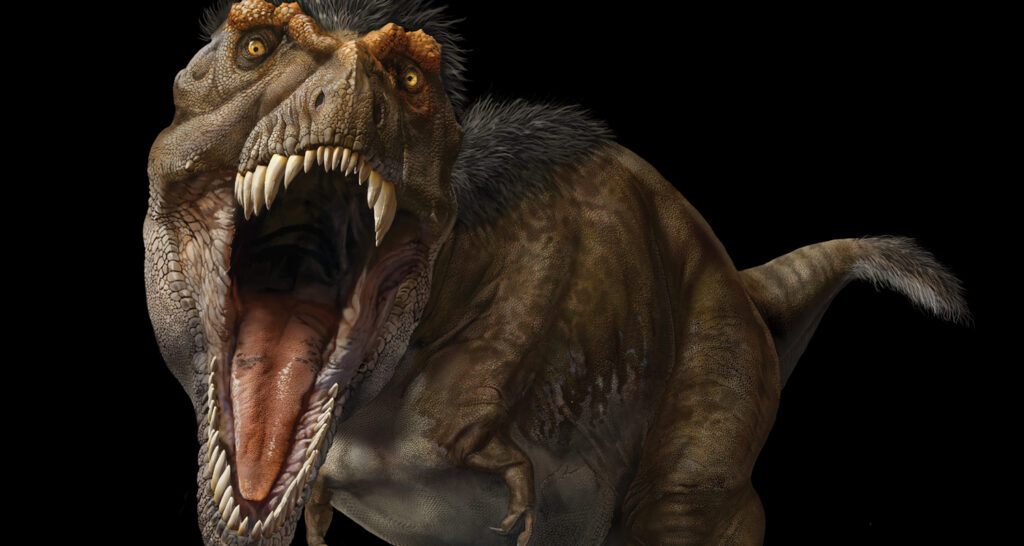Jaws of Steel
Tyrannosaurus rex cannot be talked about without mentioning its massive jaws and pointed, serrated teeth that were about six inches long, and its almighty bite. In fact, this is one of the first things we learn about it in Steven Spielberg's 1993 Jurassic Park (adapted from Michael Crichton's popular novel of the same name).
In a bloodcurdling scene, Martin Ferrero playing the role of Donald Gennaro, general counsel for Jurassic Park's genetic engineering facility, InGen, is trying to escape a gigantic T. rex.
He runs into an outhouse but it provides no refuge; the T. rex smashes its head through the outhouse, bites down on Donald and lifts him off the toilet, devouring him.
The original Jurassic Park film may have gotten some things wrong about dinosaurs but this it got right. A T. rex bite was so powerful that it could crush a car.
Dr. Donald Henderson, paleontologist and curator of dinosaurs at RTMP, calls it a “lethal, incapacitating bite.”
“It could crush bone,” exclaims Dr. Jordan Mallon, paleontologist and research scientist at Canadian Museum of Nature. “We’ve found Tyrannosaurus feces with bone in them so we know that the T. rex was able to crush through even the bone of an elephant-sized Triceratops.”
As an adult, its bite force was about 35,000 newtons—more than 116 times the bite force of the average human.
Big Head, Small Arms
One thing that wasn’t frightening about T. rex was its laughably small arms; they couldn’t be used to reach its mouth, scratch its nose, or even touch each other. It appeared comical, especially when compared to its strong thighs, herculean tail, or enormous head.
“T. rex captured its prey largely with its head,” says Dr. Mallon. “But this also made it front heavy and, for an animal that huge, if it had big arms as well then it would have had a tendency to tip forward.”
Dr. Currie agrees, calling the arms a “weight saving measure.”
As T. rex grew, it went through many changes. One prominent change was the loss of some of its feathers. “Once you get above a certain weight, overheating becomes a problem. So, the last thing a really big dinosaur needs is additional insulation,” Dr. Henderson explains.
Another notable change was a reduction in the size of its arms. Paleontologists believe there was likely evolutionary pressure for its arms to shrink in an effort to distribute weight more evenly throughout its body and keep it from falling on its face.
“Otherwise, they would have been like big teeter totters with too much weight on one end,” Dr. Currie jokes.
But don’t let its seemingly puny arms distract you, these arms were likely still muscular according to paleontologist Ken Carpenter, and the T. rex was still an astonishingly capable hunter.
A Hunter’s Keen Senses
The eyes are the window to the soul and in T. rex, it is the soul of a ferocious predator.
Just like humans and other predatory animals such as hawks, lions and wolves, T. rex had forward-facing eyes. This meant it had three-dimensional vision, could see far into the distance and had exceptional depth perception, making it an agile attacker when hunting prey.
Although T. rex was nothing like the dinosaurs in the Jurassic Park series, opening doors, setting traps, or tapping its foot to communicate, it did devote large portions of its brain to processing smell. This made it easier for it to find and catch prey.
Dr. Mallon cites a study which found that the brain of a T. rex had enlarged olfactory bulbs (the region in the brain that processes smells) and as such, had a better sense of smell than most of its peers.
Its sensory capabilities didn’t stop there. T. rex also had excellent hearing, partly attributed to its incredibly long cochlea—a bone in the inner ear responsible for changing sound waves into nerve signals and sending them to the brain.
All of this made T. rex a masterful hunter, such that it was able to prey on living dinosaurs.
“There was a duck-billed dinosaur bone found with a broken T. rex tooth in it, and the bone had actually healed around the tooth. So, we know for certain that it was bitten by a T. rex but managed to get away,” shares Dr. Mallon.
However, even though T. rex was an extraordinary hunter, paleontologists say it likely wouldn’t have chased after prey, given its size.
“An adult T. rex would not be a good pursuit predator because it’s awfully heavy. It couldn’t run very fast but could probably walk for long distances,” Dr. Henderson says. “We believe T. rex was more of an ambush predator, one who waited to strike.”
So, despite its brawny thighs and hefty feet, it couldn’t have chased down a Jeep Wrangler as its fictionalized version did in Jurassic Park. But what T. rex lacked in speed, it more than made up for in its keen senses.
A Grand Exit
Aside from its notoriously infinitesimal arms, everything else about T. rex and its life was grand, even its exit.
Although T. rex was probably near the end of its “evolutionary line,” during the Late Cretaceous period as Dr. Currie mentions, it was still living and ostensibly thriving when an asteroid hit Earth, ending the dinosaurs’ reign.
T. rex lived fast and died young, growing large quickly and often dying in their late 20s.
Some paleontologists believe this is because tyrannosaurids had already evolved repeatedly for millions of years before T. rex stormed onto the scene.
“T. rex was really unique during its time,” remarks Dr. Henderson. “So much about its anatomy and evolution was peculiar.”
“But then, you know how the story ends: that nasty asteroid came along and stopped the fun.”
Uncover the untold story of a great hunter.
Our current feature exhibition, T. rex: The Ultimate Predator presented by RBC and White Spot Restaurants, takes visitors back in time to encounter the prehistoric wonders of the late Cretaceous period and come face-to-face with a 66-million-year-old marvel!
About the sticker
Artist: Jeff Kulak
Jeff is a senior graphic designer at Science World. His illustration work has been published in the Walrus, The National Post, Reader’s Digest and Chickadee Magazine. He loves to make music, ride bikes, and spend time in the forest.
You found a sticker!
Survivors
